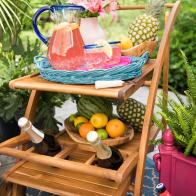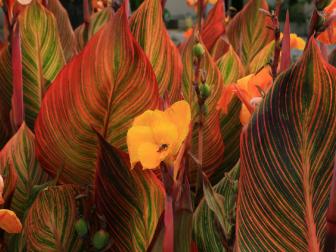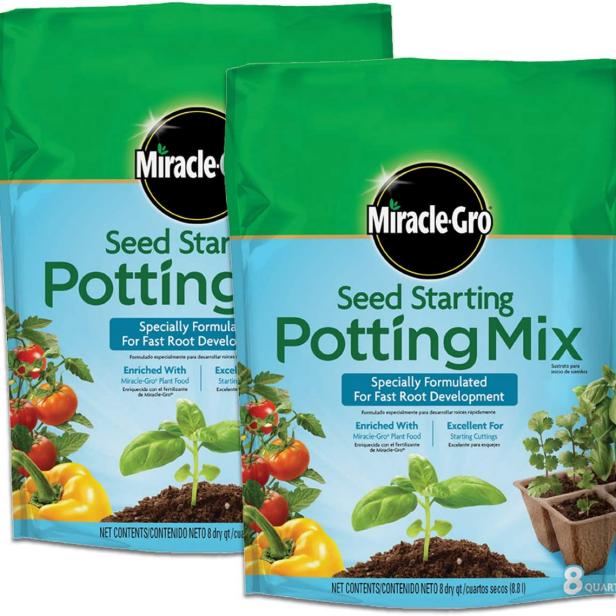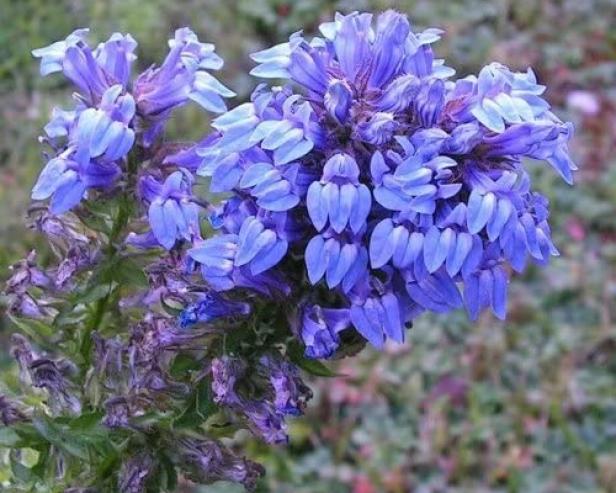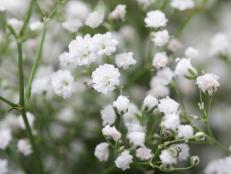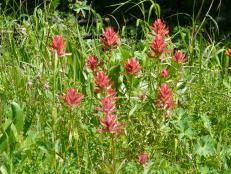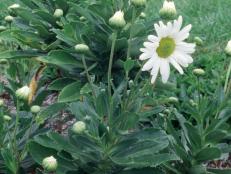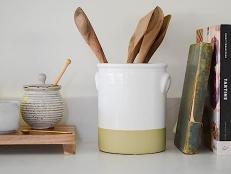How to Grow and Care For Cardinal Flower Plants
If you’ve got a garden spot that stays moist, we’ve got a plant for you. The easy-to-grow cardinal flower doesn’t mind moist-to-wet areas that other plants can’t stand.

PerennialResource.com

You might think the brilliantly red cardinal flower was named for a popular backyard bird. But these easy-to-grow wildflowers take their name from the scarlet robes worn by Roman Catholic cardinals. Native to the Americas, Lobelia cardinalis belongs to the bellflower (Campanulaceae) family and it's a short-lived perennial.
Hardy in Zones 3 to 9, cardinal flowers can be found on roadsides and the banks of ponds, streams and rivers. They also grow in swamps and wet ditches, meadows and woodlands. Unlike many plants that rot in wet soil, they need evenly moist soil.
Colorful Plants For Wet Soil 12 Photos
Dress up damp spots in your yard with living color. These vibrant plants, including cardinal flower and canna (pictured), thrive in wet soil.
Hummingbirds flock to showy, red cardinal flowers when they open from midsummer to early fall. Their green leaves have toothed margins and may be tinged bronze or purple. The plants form clumps and reach 3 to 6 feet tall and 1 to 2 feet wide. The flowers are usually red but can be white, pink or other colors. They're sometimes called Indian pinks.
Lobelia siphilitica is related to the cardinal flower, but this species of plant has blue-violet blooms. Hardy in Zones 4 to 8, it’s a clump-forming perennial that grows up to 4 feet tall and spreads one to two feet. Also known as Great Blue Lobelia, it likes the same basic growing conditions as cardinal flowers. Plant it in wetlands, rain gardens and other moist or wet areas or let it naturalize.
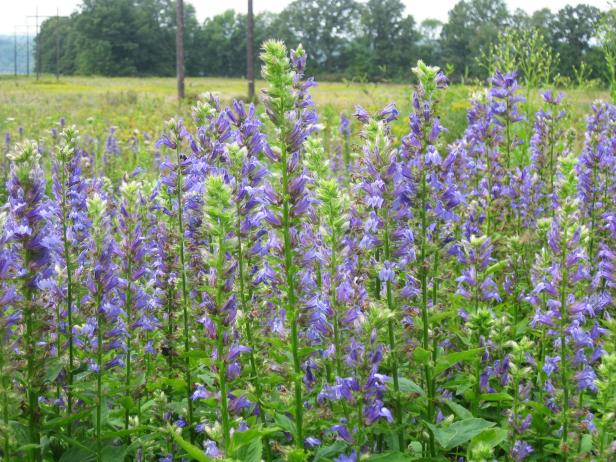
Ethan Platt/American Meadows
Lobelia siphilitica, or Great Blue Lobelia, is related to cardinal flower and opens lavender-blue flowers in late summer.
Cardinal Flower Facts
Botanical Name: Lobelia cardinalis
Hardiness Zones: Zones 3 to 9
Size: 3 to 6 feet tall and 1 to 2 feet wide
Bloom Time: Late summer
How to Grow Cardinal Flowers
Light
Cardinal flowers can grow in full sun in cool regions but otherwise prefer part shade to shade.
Fertilize
Fertilizer isn't usually necessary, but you can mix some compost into the soil once a year in late winter or early spring.
Soil
Plant cardinal flowers in humus-rich soil that is neutral to slightly acidic.
Water
Keep cardinal flowers evenly moist or wet all the time. They can’t take drought.
Mulch
Northern gardeners should mulch around the roots in winter. Cardinal flowers can handle low temperatures, but the heaving of the soil as it repeatedly freezes and thaws can kill them.
Deadhead or Prune
You don't need to deadhead cardinal flowers but you can prune them to keep them bushy. Don't cut off the flower stalks until spring.
Stake
If needed, use stakes or hoops to help keep tall plants from toppling over or being blown around in the wind.
Planting Cardinal Flowers
Space cardinal flowers 6 to 12 inches apart when planting or direct sow the seeds in early spring or fall. The plants die after blooming, but their offshoots will form new colonies. If you don't deadhead the flowers, they'll develop seed capsules and self-sow.
How to Use Cardinal Flowers
Because their stems leak a milky sap when crushed, cardinal flowers aren't good cut flowers. All parts of the plants are toxic to people and animals. However, they're great for moist areas, rain gardens, native plantings and growing along rivers, ponds and streams. They’ll also grow in a shallow water garden, but they’re not often grown in containers.
How to Create a Rain Garden in Your Yard
Do your part to save natural water resources by planting a rain garden. Learn about this easy-to-grow, clever concept.
If you want to pot them, use a large, freeze-proof container with drainage holes and fill it with potting mix. Water often and leave the container outside in the winter in a spot protected from the wind.
How to Propagate Cardinal Flowers
Although these herbaceous perennials live only a few years, they self-sow easily. You can also propagate them by dividing the clumps every two or three years. Just dig up the entire colony in the fall and cut it into sections. Replant each one 12 inches apart. You can also transplant small volunteer plants.
To propagate from seeds, collect the dried seed capsules in a paper bag and shake it to release them. For best results, keep the tiny seeds in the refrigerator for two or three months to mimic the natural cold they’d get if they self-sowed outdoors. You don’t have to chill them, but it helps more seeds germinate.
To start the seeds, sow them on trays filled with moist seed starting mix or a fine peat mix. They need light to germinate so don’t cover them. Keep them moist and under lights or in a greenhouse. Once the seedlings appear, move them into individual pots and fertilize every other week with a liquid fertilizer. Wait about four weeks, and until all danger of frost has passed, before you transplant them.
You can also propagate a cardinal flower in the summer by pressing the lower part of a stem onto the ground. Hold it down for a few weeks with a landscape staple, clamp or clip. After roots form, cut away the new plant and replant as desired.
Cardinal Flower Pests and Diseases
Cardinal flowers are seldom bothered by pests and diseases, although slugs and snails can be a problem. Sink shallow saucers of beer into the ground so they’ll fall in and drown or use a commercial snail and slug barrier or bait.
Fungal diseases can occur if the plants have poor air circulation. Use a fungicide or cut them down to the ground. When they regrow, they’ll be disease-free.
Hungry rabbits, deer and other wildlife will eat almost anything but usually leave cardinal flowers alone.
Companion Plants for Cardinal Flowers
Some gardeners think brilliant red cardinal flowers clash with other reds, but they're lovely when grown with blue lobelia, ageratum and vervain or with orange or purple coneflowers. Other good choices are swamp milkweed, monkey flower, bristly buttercup, wild iris and swamp rose.
Types of Cardinal Flowers
Lobelia cardinalis is the native species. Cultivars include:
‘Queen Victoria' — Crimson flowers have burgundy stems on plants that grow to 5 feet. Zones 5-9.
'Alba' — These bright, white flowers with medium green foliage mature at 24 to 36 inches tall. Zones 5-9.
'Angel Song' — Plants reach up to 3 feet tall and bear cream and salmon-pink flowers. Zones 3-9.
'Starship Deep Rose' — Flowers are rich rose and grow to 24 inches over compact clumps of foliage. Zones 6-10.
'Black Truffle' — Red flowers are surrounded by purplish-black foliage. Plants grow 18 to 24 inches tall. Zones 5-8.
'Starship Scarlet Bronze Leaf' — Plants with bright red flowers and bronze-green foliage grow to 24 inches tall. Zones 6-10.

%20Taniya%20Nayak,%20Ty%20Pennington,%20Alison%20Victoria,%20and%20Brian%20and%20Sarah%20Baeumler_BOTB_HGTV%20.jpg.rend.hgtvcom.196.196.suffix/1683310636672.jpeg)


